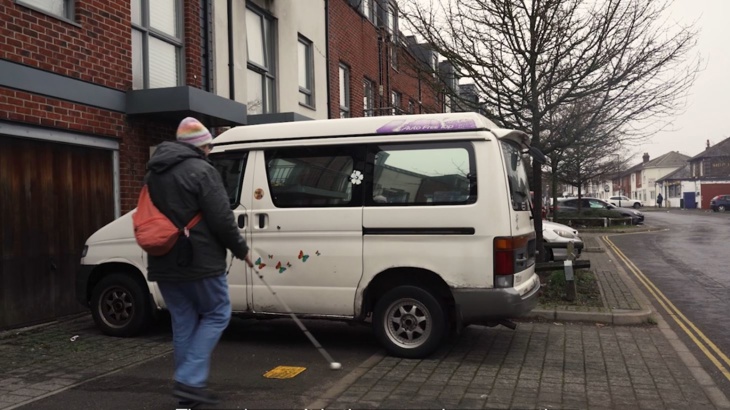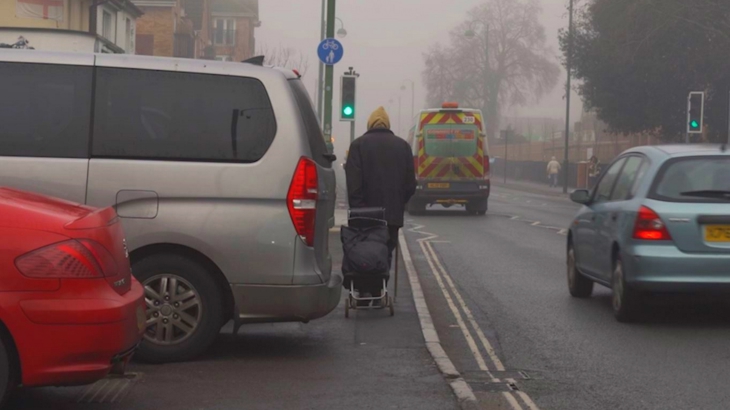An independent report by Sustrans and Transport for All, commissioned by the LGA, has been published. It details the barriers faced by people accessing footways and the challenges facing local authorities when making footways accessible.

The discrimination of pavement parking needs to end, and local authorities must be given greater powers to do this. Credit: Toby Spearpoint/Sustrans
The discrimination of pavement parking needs to end.
And local authorities must be given greater powers to do this; to make our roads and footways safe and inclusive for everyone.
A new report, commissioned by the Local Government Association (LGA), highlights the hurdles faced when trying to do this.
It assesses the threat to public safety from vehicles parked on footways, especially for vulnerable pedestrians routinely forced to enter roads just to get around.
The report is based on a literature review, alongside interviews and a survey with officers and elected members from geographically diverse local authorities across England.
Our CEO, Xavier Brice was featured on BBC Breakfast discussing the report and the impact pavement parking has on all people.
And he explained why we are calling for its prohibition outside of London, or at least greater power for local authorities to take action.
Stop the danger
As Sustrans has repeatedly stated, parking vehicles on the pavement is not just inconvenient.
It creates a hazard for people walking and wheeling.
Parking on the pavement puts people at a greater risk of collision and injury by forcing them onto the road.
Pavement parking is particularly challenging for many disabled people, especially people with mobility, neurological or visual impairments, as well as children walking and in buggies.
73% of disabled people believe fewer vehicles parked on the pavement would help them walk or wheel more, as revealed by our Disabled Citizens Inquiry.
The Inquiry also revealed that over two-fifths of disabled people often experience problems reaching their destination.
You can read more about our position on pavement parking in this blog.

Parking vehicles on the pavement is not just inconvenient – it creates a hazard for people walking and wheeling. Credit: Toby Spearpoint/Sustrans
Protecting pavements for people
It is now more than three years since the Government’s consultation on pavement parking closing.
Over 15,000 people took the time to respond to this consultation, demonstrating the public’s concern.
To mark the third anniversary, Tim Burns, Head of Policy at Sustrans, wrote an opinion piece explaining how legislation to prevent pavement parking to improve safety for everyone is still critical.
The evidence is clear.
And now is the time for national decision-makers to consider the damage a lack of funding and confusing regulations are causing for people across the UK simply wanting to make every day.
Hear from Mark about how he navigates pavement parking with his guide dog.
Watch our video on why we're calling for a ban on pavement parking.





